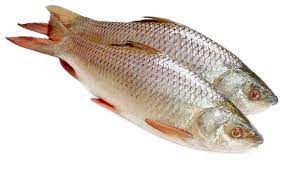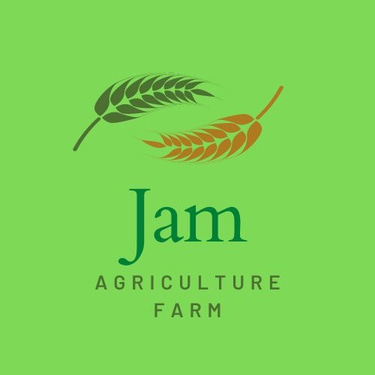Rohu Fish Farming
Among all local varieties, Rohu is popular due to its taste and market demand. Farmers can expect good profits in Rohu farming with good farm management practices. Rohu fish farming is a profitable business.
FISH FARMING
ROHU FARMING
Rohu is freshwater fish and is a very popular fish in Pakistan. This specy is also named Dambra, Kurriro (in Sindhi). Among all local varieties, Rohu is popular due to its taste and market demand. Farmers can expect good profits in Rohu farming with good farm management practices. Rohu fish farming is a profitable business. According to Rohu fish demand in the market, production is not enough. Although it gives a yield of at least 8 months, still it is highly profitable for business purposes
Characteristics of Rohu Fish
Rohu has a thick body with a narrow head and tail compared to Catla fish.
Its fish body is covered with scales except for fins and head. Its head is also triangular.
Rohu's body surface and inner surface are in brown colour.
Rohu fish belly is in silver colour and there are 7 fins in the body.
Its maximum length is up to one meter.
The body is curved to the slightly upper side and it has two pairs of nostrils.
Scales of Rohu fish are reddish except on the belly side.
Polyculture
Rohu is the principal species reared in carp polyculture systems along with the other two Indian major carp, catla and Mori (mrigala). Due to its wider feeding niche, which extends from column to bottom, rohu is usually stocked at relatively higher levels than the other two species. In Pakistan, the Rohu is cultured within composite carp culture systems incorporating all three major carp, as well as common carp and two Chinese carp, silver carp and grass carp. However, the percentage of rohu, even within this six-species combination, is retained at 35-40 per cent, similar to that in the three-species polyculture system. The higher consumer preference and market demand for rohu during recent years have also led to the practice of a two-species culture with catla. The three major carps, rohu being the most important, are also the dominant species cultured in other countries such as Bangladesh, India, Myanmar, Lao People's Democratic Republic, Viet Nam and Nepal. In all these countries, silver carp, grass carp and common carp are the most important species reared with the three Indian major carp in aquaculture.
Breeding Time
Rohu fish gets maturity in three years and female Rohu contains 3 Lacks of eggs. The best for egg laying is April to July. Rohu fish lays eggs in open waters and not in stagnant waters.
Seed collection
Commercial Rohu breed culture is common and induced breeding culture is playing a major role in total seed requirement. Rohu seed is also available from freshwater rivers, canals, lakes, reservoirs and other open water bodies. The best source of quality seed is the local Hatcheries.
Rearing Fingerlings
Rohu fry should be reared along with mrigala and Catla with combined densities of 1 lack to 1.5 lack per acre. Generally, a fry of 25mm in length of Rohu should be further reared in a nursery up to the length of 100 mm and weight of 15 grams to be stocked in the main pond.
Stocking
A pond having an average water depth of 2.0-3.0 m can be stocked at the rate of about 2,000 fingerlings/acre. In Sindh, where the pond is spread over 10 to 100s acres and no supplementary feed is given to fish, fingerlings of 6 to 10-inch size are stocked with an average of 500 per acre. However, in Punjab, 800 to 1200 fingerlings are stocked maintaining the required water level and supplementary feed.
Use of Fertilizers
Organic (Cow dung and poultry waste) and inorganic (Chemical) fertilizers should be used. Supplementary feeding also may be provided along with the mixture of oil cake, rice bran and wheat flakes etc. Generally, the survival rate of fingerlings is 60 to 80 per cent.
Feeding to Rohu Fish
Rohu fish takes the feed from the middle level of the water. The main feed of Rohu fish is plant and other organic substances. In commercial farming rice dust, cake, cracked wheat, and fish meal can be served as supplementary feed in the pond to gain good weight in a short period of time.
Harvesting
The fish are reared for a period of 10 - 12 months and reach a size of about 700 – 800 g. In well-prepared ponds, rohu attain 700 – 1 000 g in the first year, 800 – 2 000 g in the second year and 2 000 – 4 000 g in the third year
Rohu fish is collected from ponds by using nets when they attain at least a weight of 500 grams. However, the Rohu fish has good demand when they gain weight of 1 to 2 kg each. Harvesting may be done on the basis of fish size and market demand.
Market Demand
In Pakistan, there is a huge demand for Rohu fish. Most of the Hotels and restaurants serve this fish. Especially, in Sindh and Punjab people make fish fry or fish curry of Rohu fish. The regular market price of Rohu fish is about Rs. 300 to 450 per kg. If cultivated with Catla and Mori fish, farmers can earn a revenue of Rs. 1 lack per acre per year, which can go up to Rs. 1.5 lacks/acre, per year.


